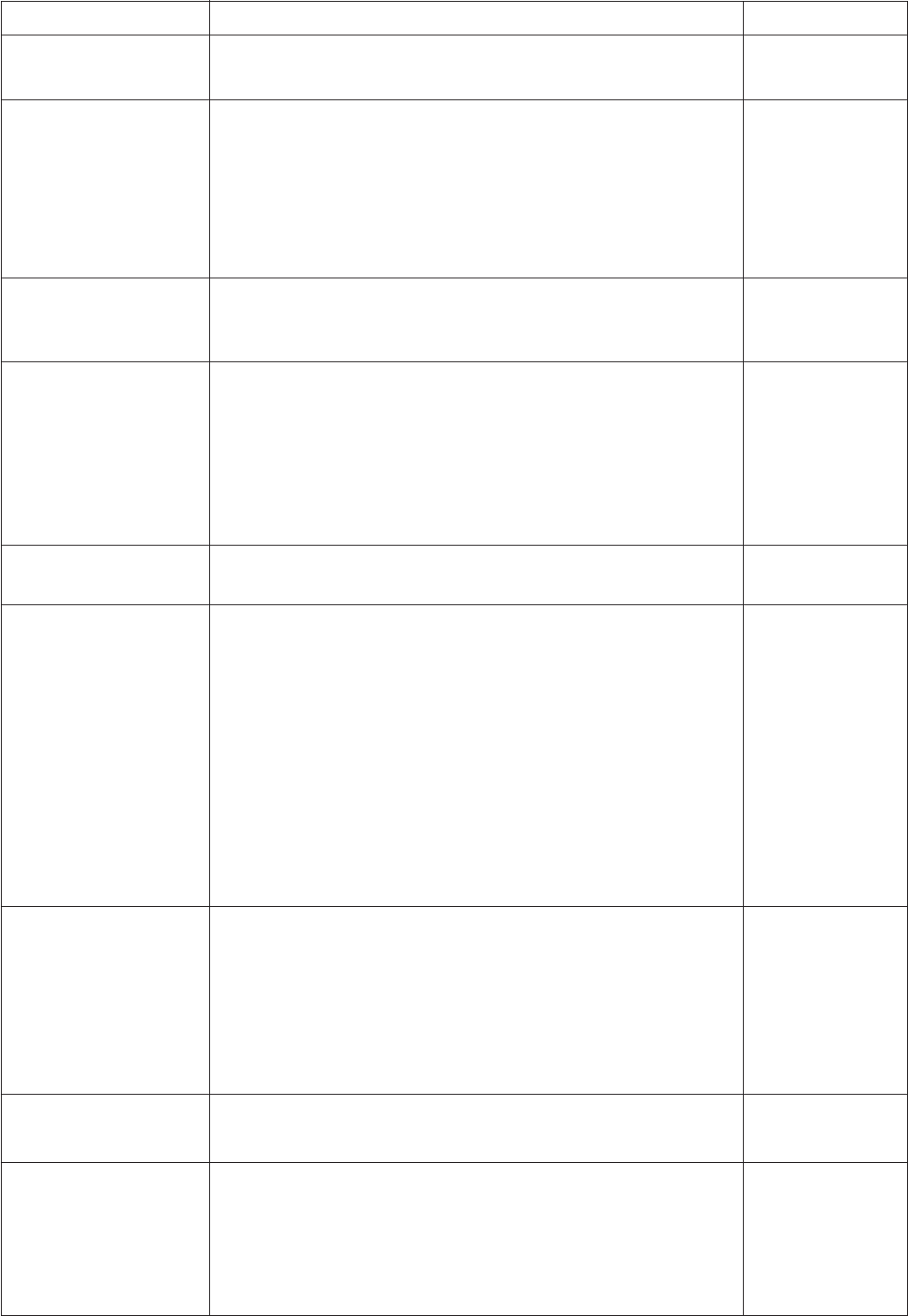
160
Troubleshooting
Problem
The machine is noisy.
The needle thread breaks.
The bobbin thread breaks.
The needle breaks.
Visual Touch Screen is
not clear.
Skipped stitches
Seam puckering
Slipping layers
The cloth is not feeding
smoothly.
Cause
1. Thread is jammed in the hook area.
2. The feed dog is packed with lint.
1. The needle thread is not threaded properly.
2. The needle thread tension is too tight.
3. The needle is bent or blunt.
4. The needle is inserted incorrectly.
5. The thread is too heavy for the needle.
6. The needle thread was not set in the thread holder when
embroidery sewing started.
1. The bobbin thread is not threaded properly in the bobbin holder.
2. Lint has collected in the bobbin holder.
3. The bobbin is damaged and does not turn smoothly.
1. The needle is inserted incorrectly.
2. The needle is bent or blunt.
3. The needle clamp screw is loose.
4. The needle thread tension is too tight.
5. The needle is too fine for the fabric being sewn.
6. The fabric was pulled toward you when sewing free motion
quilting with the free motion quilting open-toe foot QO.
1. The contrast of the screen is not adjusted properly.
1. The needle is inserted incorrectly.
2. The needle is bent or blunt.
3. The needle and/or threads are not suitable for the fabric being
sewn.
4. A blue needle is not being used for sewing stretch, very fine or
synthetics.
5. The needle thread is not threaded properly.
6. The needle is defective (rusted, burr on needle eye or tip).
7. The embroidery hoop is not set properly.
8. The fabric is not stretched tightly enough on the embroidery hoop.
9. A purple needle is not being used for sewing thick fabrics,
denims and across the hem.
1. The needle tension is too tight.
2. The needle thread or the bobbin thread is not threaded correctly.
3. The needle is too heavy for the fabric being sewn.
4. The stitch length is too long for the fabric.
5. The stitch width is too wide.
6. The fabric is not stretched tightly enough on the embroidery hoop.
1. The dual feed foot is not being used for sewing hard to feed
material.
1. The feed dog is packed with lint.
2. The dual feed foot is not being used for sewing hard to feed
material.
3. The stitches are too fine.
4. The feed dog is lowered.
Reference
See page 158.
See page 158.
See page 15.
See page 37.
See page 18.
See page 18.
See page 18.
See page 113.
See page 14.
See page 158.
Replace the bobbin.
See page 18.
See page 18.
See page 18.
See page 37.
See page 18.
See page 90.
See page 93.
See page 18.
See page 18.
See page 18.
See page 18.
See page 15.
Change the needle.
See page 113.
See page 112.
See page 18.
See page 37.
See pages 13-15.
See page 18.
Make stitches shorter.
Reduce the stitch
width.
See page 112.
Use the dual feed
foot.
See page 158.
Use the dual feed
foot.
Make stitches longer.
See page 28.


















